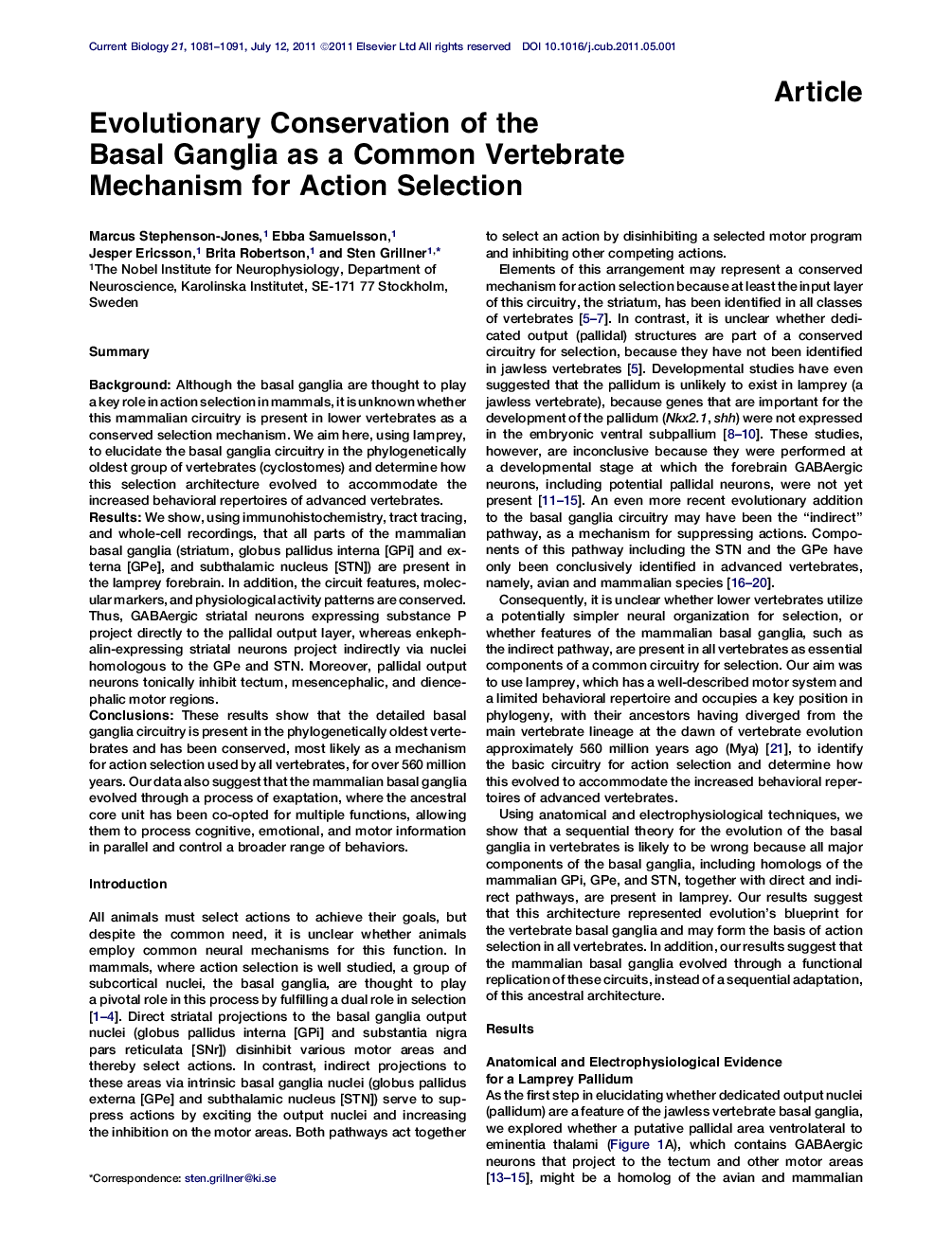| کد مقاله | کد نشریه | سال انتشار | مقاله انگلیسی | نسخه تمام متن |
|---|---|---|---|---|
| 2043241 | 1073332 | 2011 | 11 صفحه PDF | دانلود رایگان |

SummaryBackgroundAlthough the basal ganglia are thought to play a key role in action selection in mammals, it is unknown whether this mammalian circuitry is present in lower vertebrates as a conserved selection mechanism. We aim here, using lamprey, to elucidate the basal ganglia circuitry in the phylogenetically oldest group of vertebrates (cyclostomes) and determine how this selection architecture evolved to accommodate the increased behavioral repertoires of advanced vertebrates.ResultsWe show, using immunohistochemistry, tract tracing, and whole-cell recordings, that all parts of the mammalian basal ganglia (striatum, globus pallidus interna [GPi] and externa [GPe], and subthalamic nucleus [STN]) are present in the lamprey forebrain. In addition, the circuit features, molecular markers, and physiological activity patterns are conserved. Thus, GABAergic striatal neurons expressing substance P project directly to the pallidal output layer, whereas enkephalin-expressing striatal neurons project indirectly via nuclei homologous to the GPe and STN. Moreover, pallidal output neurons tonically inhibit tectum, mesencephalic, and diencephalic motor regions.ConclusionsThese results show that the detailed basal ganglia circuitry is present in the phylogenetically oldest vertebrates and has been conserved, most likely as a mechanism for action selection used by all vertebrates, for over 560 million years. Our data also suggest that the mammalian basal ganglia evolved through a process of exaptation, where the ancestral core unit has been co-opted for multiple functions, allowing them to process cognitive, emotional, and motor information in parallel and control a broader range of behaviors.
Graphical AbstractFigure optionsDownload high-quality image (188 K)Download as PowerPoint slideHighlights
► All nuclei of the mammalian basal ganglia are also present in the oldest vertebrates
► All components of the direct pathway have been identified in lamprey
► The indirect pathway previously only shown in mammals and birds is present in lamprey
► The basal ganglia have evolved through functional replication (exaptation)
Journal: - Volume 21, Issue 13, 12 July 2011, Pages 1081–1091